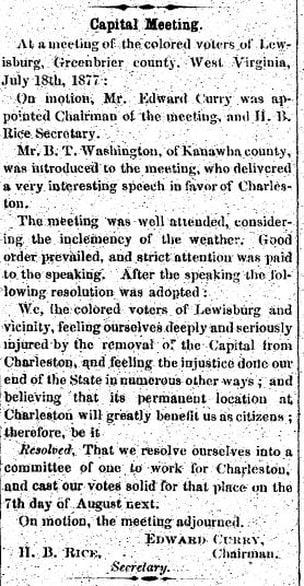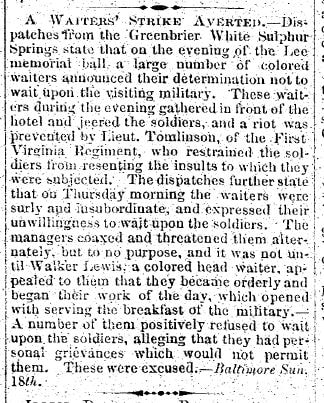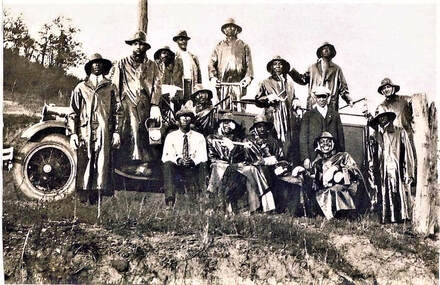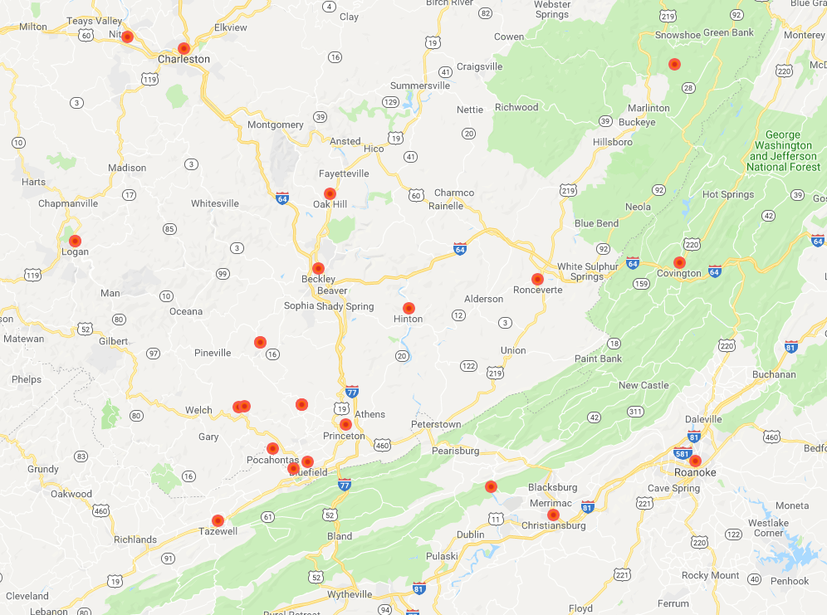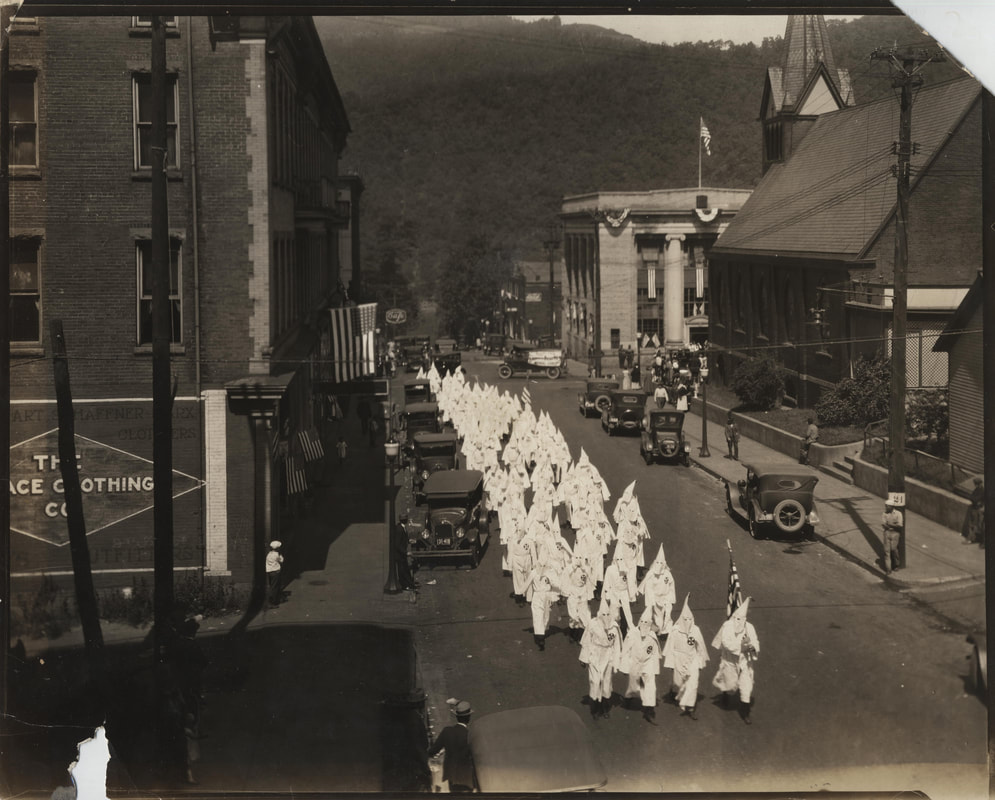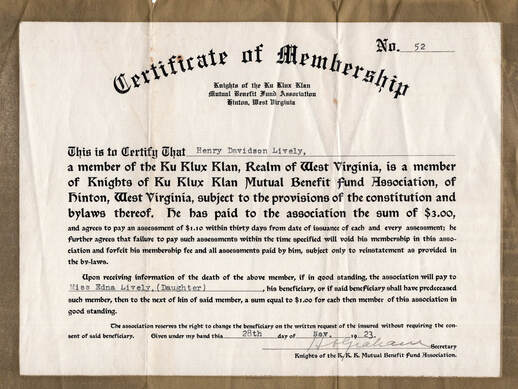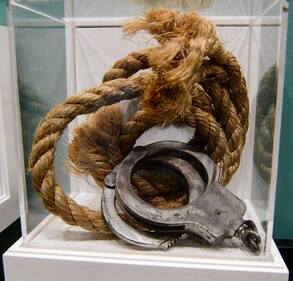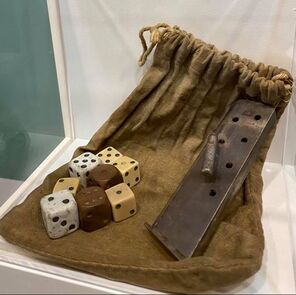Jim Crow Laws (named for a typical black character in a minstrel show) were a series of rigid anti-black laws that were used to reduce African Americans to the status of second-class citizens. This racial caste system operated primarily, but not exclusively, in southern and border states between 1877 and the 1960s.
Fighting For Civil Rights
|
Black businesses, churches and community organizations in Greenbrier County supported each other through the Jim Crow era. The right to vote was one of their most important tools. The earliest proof of African American political organizations is in 1877 where the Greenbrier Independent mentions a Colored Voters of Lewisburg meeting. The earliest mention of a local NAACP chapter is in 1931.With these forms of political organization, black Americans worked towards social, political and economic equality. Waiters' Strike Averted at the Greenbrier Resort on August 18th, 1877 |
|
Robert Riddle, a community activist, organized the Ronceverte African American volunteer fire department formed because of the slow response of the white firemen to black neighborhoods.
On September 10th, 1919, John Riddle, Everette Renick and others wrote to William B. Blake, the mayor of Ronceverte, protesting the unfair treatment and abuse laid on African Americans. |
The Ku Klux Klan
The Ku Klux Klan (KKK) was formed after the Civil War to oppress newly freed African Americans and restore white supremacy in the South. Klansmen ensured African Americans would not be able to access political, civil, or economic rights. A second wave of KKK activity emerged in the 1920s that took a “nativist” stance on supremacy and expanded terrorist activities beyond African Americans to include other minority groups. At its peak in the 1920s, membership of the KKK exceeded 4 million people nationwide.
In West Virginia there were over 20 local units. The one in Ronceverte had members from all over Greenbrier County.
In West Virginia there were over 20 local units. The one in Ronceverte had members from all over Greenbrier County.
A project led by historian John Kneebone at Virginia Commonwealth University to map the second rise of the KKK. Each red dot is a branch of the KKK.
Lynching in Greenbrier County
1889 Lynching John Carter, an African American 19-year-old miner in the New River, robbed a store and shot a police officer in Hinton in 1889. When talk arose of lynching, he was moved to Greenbrier County jail. On July 22nd, Carter was lynched outside of Lewisburg by a mob. The African American community refused to bury his body in their cemetery so he was buried in the woods. The men, five of who were identified, were never brought to justice.
|
1931 Lynching In Leslie two white officers, Joseph Myles and Jack Brown, were called to break up a Black party. While the officers were leaving the scene, they were fatally shot. Some say they were shot unprovoked while others say they were shot in self-defense. Two Black men, Tom Jackson and George Banks, were arrested. On December 10, 1931 Jackson and Banks were taken by a mob, hanged from a telephone pole, and shot numerous times. West Virginia’s anti-lynching law required Greenbrier County to pay $5,000 apiece to the families, but they refused to pay until the state demanded payment in 1933.
|
